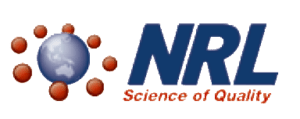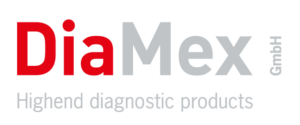Watch again the first part of three in our webinar series; Quality Control in the Serology Laboratory: Why is Quality Control for serology different to the norm?
24th Mar, 2022

Missed the webinar? Don’t worry! You can watch it right here. To make sure you don’t miss future webinars, simply add your email to our newsletter sign up form at the very bottom of this page.
This webinar was part 2 of a 3 series webinar.
Click here to register for part 3 now.
“Thank you for a great presentation. I look forward to the third session.”
“Very useful, thank you.”
“Thank you for the presentation”

In an ideal world, would we have low positive, high positive and low negative high negative QCs for every assay instead of just positive or negative?
The simple rationale is ‘the more QC (Quality Control) the better.’ This is not really the case. When looking at how qualitative assays perform in relation to their cut-off value, having controls above and below the cut-off value is difficult to do, and highly likely does not add value. Information provided in my presentation highlight how qualitative assays are designed and thus why low QCs (whether above or below the cut-off value) would only be suitable with use of a true seroconversion sample panel. Using a diluted QC aimed at a cut-off value would not represent what is going on with antibody levels at or near the cut-off value during seroconversion and should thus be avoided at all costs in qualitative testing. Regarding low and high positive QCs, when choosing a QC sample, the best option is to find a point in the dynamic curve of an assay that demonstrates variation in QC results well (that is, where on the curve an assay responds to all the sources of variation that influence a serology assay). With this principle, there is no need for more than one QC. When using Optitrol QCs, the work has already been done on determining where this ‘best fit’ is, supporting the idea that only one QC will suffice.
Why do reagent lots perform so differently from one lot to another?
Qualitative assays display reagent lot variation more obviously and regularly than observed in quantitative assays. The main reason is that with quantitative assays as used in clinical chemistry, when there is a shift from the expected norm, the assay can be recalibrated to bring the reagent lot back to where it is expected to be. Qualitative assays used in serology cannot be calibrated in this way. The source of lot variation is often due to the components used to make a particular production lot changing from one lot to the next, such as solid phase, conjugates, monoclonals used to capture target antibodies, etc (the list is exhaustive). These changes often influence analytical performance (the numerical output) but do not affect diagnostic performance (the ability to detect an analyte if it is present in the sample). the changes from lot to lot can be detected using QC and lead to appropriate investigation as to whether this is a problem or not (using tools such as seroconversion panels and reference panels of samples) but lot variation leading to sensitivity issues cannot be determined by the QC alone.
In an assay, would it be useful to always have a positive/negative control to compare the patient sample to?
The use of a positive QC should be ‘de rigueur’. Use of a positive QC to allow comparison to patient samples is not relevant – values observed for a QC may not be comparable to a patient result.
The use of a negative externally provided QC is (in my opinion) a personal choice. I do not see the value in a negative EQC that outweighs the value in an assay negative control (which is mandatory if provided by the manufacturer). The reason to use an assay negative control is for the validation of the test run (as with an assay positive control). The use of a negative EQC theoretically is to assess issues with specificity. This is unlikely to be detected using a negative control (there simply are not enough EQC test results to support this statistically), and thus (once again in my opinion) there is more value in looking at patient data (negative results) to monitor specificity as this adds more statistical opportunity to identify issues with specificity than a QC would.
Why would changes with a QC material with a tighter SD be seen as less apparent than those with a higher value and SD?
The statement made during the presentation was in relation to the example of the Roche Elecsys anti-HCV II assay, where at low COI ratios close the cut-off variation would more than likely be ignored as it would seem minimal due to tight SD at that low level (~2.5x COI). This was not a specific statement on all situations where a tighter SD is observed. When looking specifically at the Roche HCV assay, our observation was that linearity of the assay occurs with higher COI values, thus highlighting the importance of good validation of QC/assay combinations prior to selection for suitability for your testing algorithm. Lower QC is not always better, particularly with the knowledge that low QC samples do not represent the samples that would give a true low result on that assay. In this situation, knowing that there is variation, and assessing whether that variation is of concern far outweighs how the assay performs at its lowest analytical sensitivity.
For more information on Diamex Serology Controls visit our dedicated page here.
For more information on the NRL please click here.
For a personal demonstration of the free to use EDCNet software please contact us here.